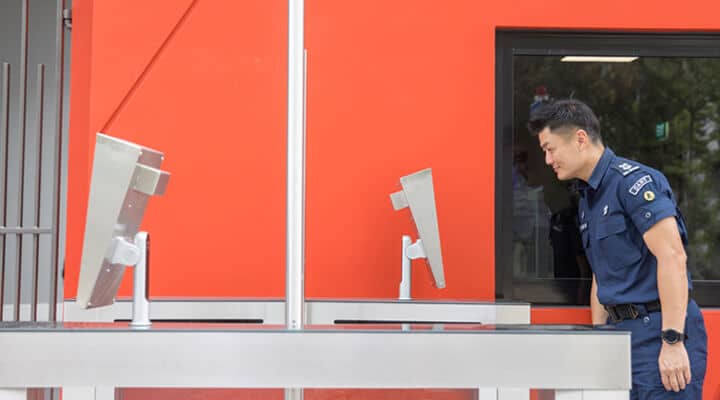Sparking Productivity With Tech: Singapore's First Smart Fire Station

Smartwatches, headsets for virtual learning and electronic dashboards – these are some gadgets that the officers of Punggol Fire Station are equipped with. Singapore’s first smart fire station has many high-tech and smart features that increase productivity and work efficiency.
The station is led by Commander Fire Station Lieutenant-Colonel (LTC) Foo Yiing Kai. LTC Foo, who joined the Singapore Civil Defence Force (SCDF) in 2002, played an instrumental role in designing Punggol Fire Station.
The process involved much input from officers on the ground. “Many station features were developed in response to officers’ feedback about their pain points,” LTC Foo shared.

Less Admin, More High-value Work
One of these pain points is the significant amount of time spent on routine tasks such as administrative and sentry duties.
In the near future, the station’s officers would be able to spend less time assigning and receiving daily deployment roles with the help of e-rostering and smartwatches.
Rostering is traditionally done by Section Commanders using a spreadsheet. An e-rostering system would automate this task by pre-rostering officers based on their vocations, seniority and specialist skills.
At the start of the day, the officers’ assignments would be sent to their smartwatches (that each officer wears), eliminating the need for a physical meeting.


Targeted and Realistic Training
To attend training classes, officers usually travel to the Civil Defence Academy in Jalan Bahar. Punggol Fire Station’s officers, however, can simply use the Extended Reality (XR) goggles in the station’s Smart Classroom to participate. The trainers at the Academy can also remotely monitor the lesson via video conferencing platforms.

One of these training lessons involves revising methods to free a road traffic accident victim from a vehicle. Instead of reading manuals and visualising the extrication process, XR training lets officers practise with life-like imagery and an interactive 3D-printed tool that mimics the actual equipment. Such virtual hands-on training helps officers learn more quickly and effectively, while saving time on commuting.
Despite the cost and time savings of XR, LTC Foo emphasised that physical practice is still important as it simulates the conditions of the actual scenario. “This shouldn’t replace physical training, it should only augment learning,” he said.
Smoother Frontline Operations

When combating a fire, firefighters will map out the scene to analyse risks and allocate resources and equipment. This preparation also serves as a brief for the firefighters before they enter the fire site, so that the operation can be carried out safely and efficiently.
The planning and monitoring of an operation, known as “staging”, is normally done on a whiteboard. This method is simple and quick, but provides limited tracking of the details of an operation.
Punggol Fire Station’s firefighters perform e-staging on an electronic dashboard instead. This allows them to keep track of all aspects of an operation, including the deployment of equipment, logistics and manpower.
The data can also be uploaded and transferred to mobile command posts and SCDF’s Headquarters, allowing commanders at all levels to view the same situational picture in real-time.

Leading the Way Forward
For LTC Foo, adapting to new ways of working is not perceived as a hill to overcome, but an opportunity to be embraced.
“The most critical skill a leader needs is the capacity to lead change,” he said. “I want to ensure my team is on board this transformation journey so they can not only integrate technologies, but improve processes as well. Innovation can change the ecosystem.”

To get more stories like this, subscribe to the Challenge Telegram channel.
- POSTED ON
Jun 13, 2022
- TEXT BY
Hidayah Md Sham
- PHOTOS BY
Norman Ng









